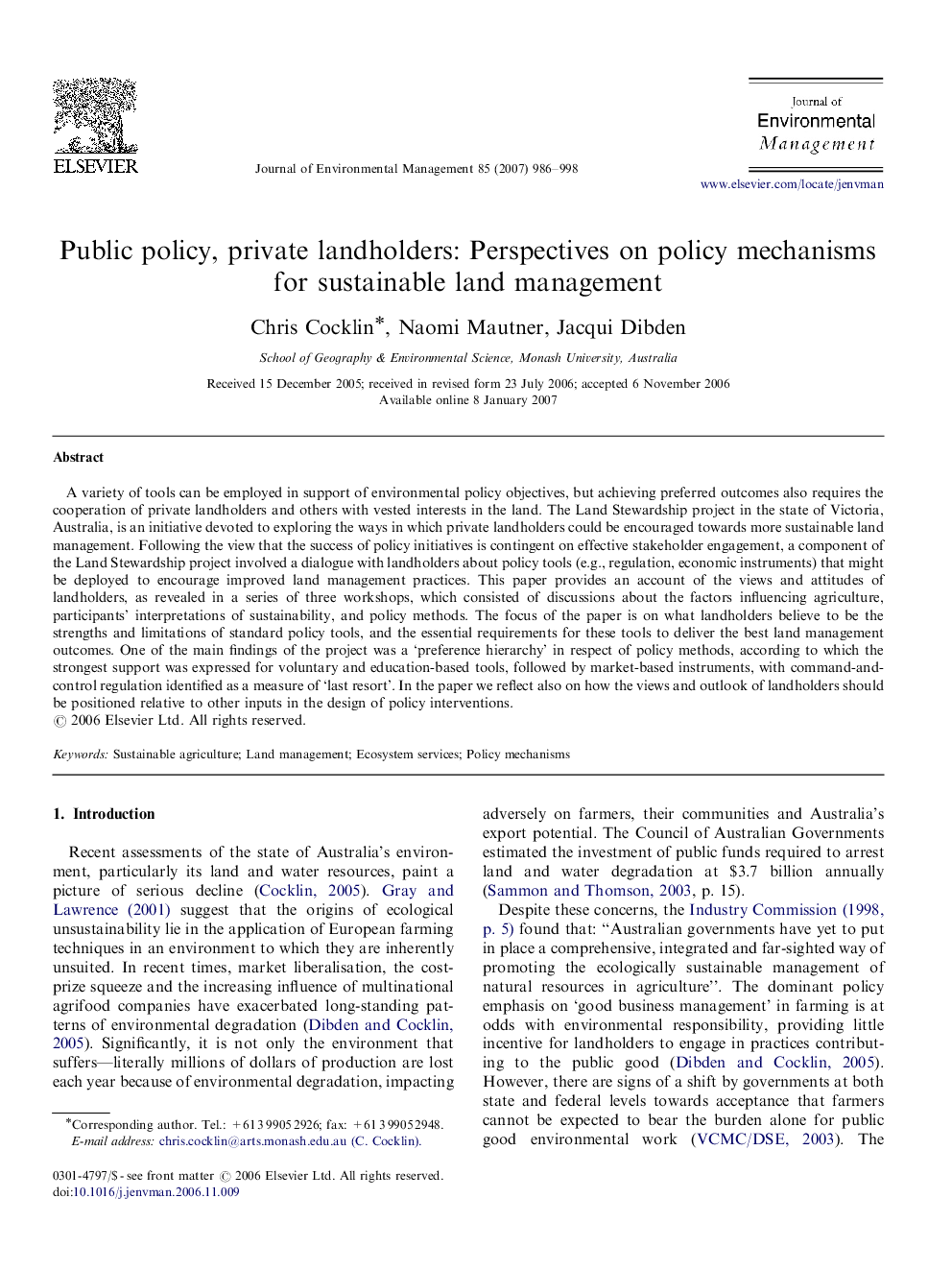| Article ID | Journal | Published Year | Pages | File Type |
|---|---|---|---|---|
| 1058502 | Journal of Environmental Management | 2007 | 13 Pages |
A variety of tools can be employed in support of environmental policy objectives, but achieving preferred outcomes also requires the cooperation of private landholders and others with vested interests in the land. The Land Stewardship project in the state of Victoria, Australia, is an initiative devoted to exploring the ways in which private landholders could be encouraged towards more sustainable land management. Following the view that the success of policy initiatives is contingent on effective stakeholder engagement, a component of the Land Stewardship project involved a dialogue with landholders about policy tools (e.g., regulation, economic instruments) that might be deployed to encourage improved land management practices. This paper provides an account of the views and attitudes of landholders, as revealed in a series of three workshops, which consisted of discussions about the factors influencing agriculture, participants’ interpretations of sustainability, and policy methods. The focus of the paper is on what landholders believe to be the strengths and limitations of standard policy tools, and the essential requirements for these tools to deliver the best land management outcomes. One of the main findings of the project was a ‘preference hierarchy’ in respect of policy methods, according to which the strongest support was expressed for voluntary and education-based tools, followed by market-based instruments, with command-and-control regulation identified as a measure of ‘last resort’. In the paper we reflect also on how the views and outlook of landholders should be positioned relative to other inputs in the design of policy interventions.
